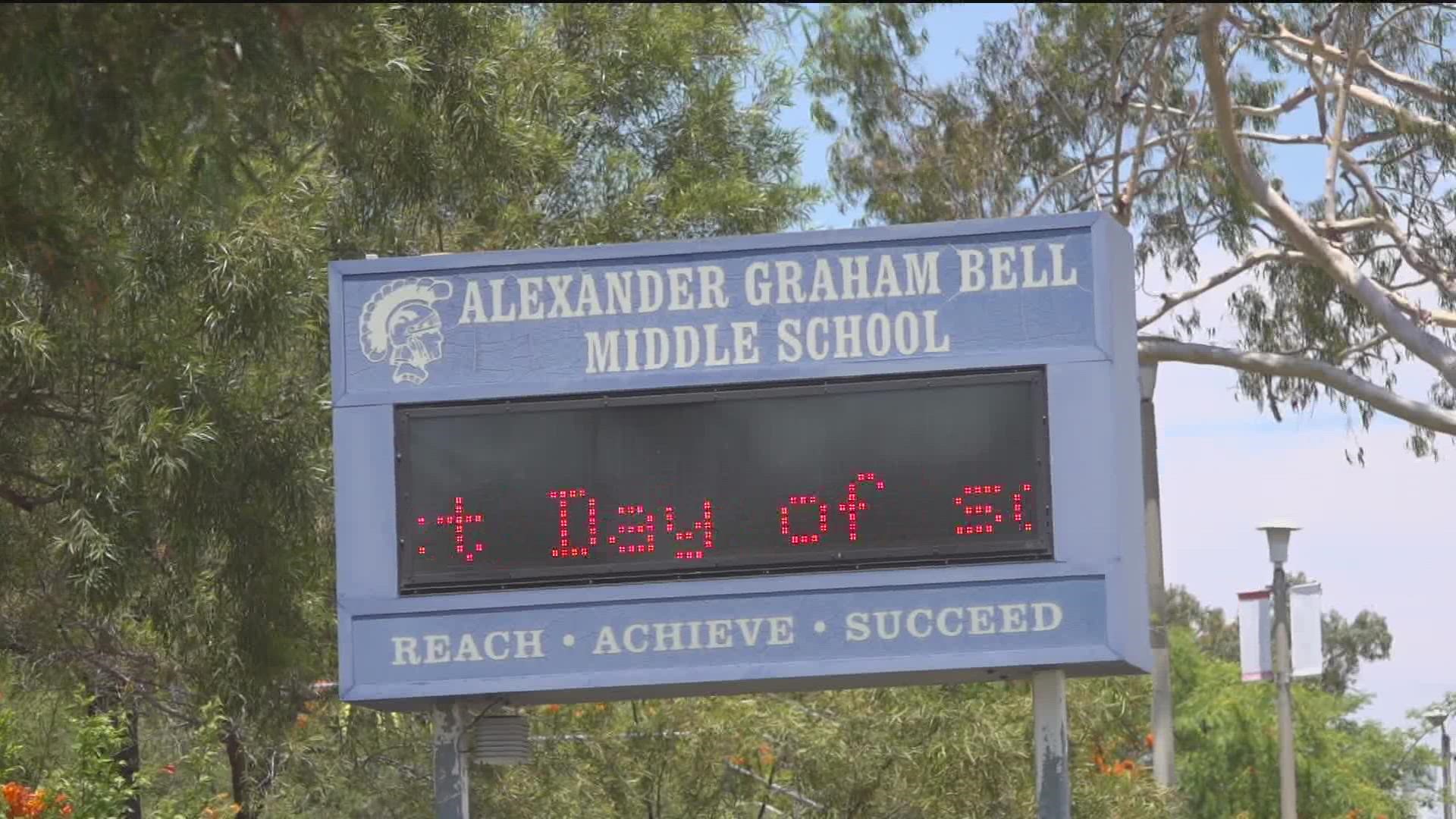SAN DIEGO — San Diego Unified School District wants the cities of La Mesa and National City to help pay to monitor an old landfill that now sits underneath Bell Middle School in South San Diego's Bay Terraces community.
CBS 8 has obtained two new legal claims that the district filed against the cities.
The claims allege that the cities have failed to pay their share of the costs to monitor the decades-old landfill. The district did not provide an exact dollar amount for the monitoring but said the costs are in excess of $10,000.
The landfill underneath Bell Middle School
According to an environmental report from 2011, San Diego Unified leased the land located at 620 Briarwood Road to the County of San Diego in 1960 to use as the Sweetwater Landfill.


La Mesa, National City, and the County buried trash at the landfill from 1962 through 1967.
San Diego Unified wasted no time in building on top of the newly closed landfill, beginning construction of Bell Junior High School in 1967, according to documents obtained by CBS 8.
Now, portions of the athletic fields and playgrounds sit on top of the landfill. Vents are now located throughout the field to release methane gas from the decomposition of the waste. A flare station sits at the southeast corner of the athletic field where methane gas is burned off.
Water and air quality at Bell Middle School
According to a 2011 environmental assessment from Ninyo & Moore, a sophisticated gas detection system says the methane gas does not exceed current air standard levels.
However, according to a 1989 Los Angeles Times article, county officials were forced to close the playground because methane gas had been leaking from the ground. The article stated that officials detected methane gas readings of 65,000 parts per million. Methane is considered to become explosive at 40,000 parts per million.
In regards to water, the 2011 environmental report detected "volatile organic compounds" in groundwater underneath Bell Middle School. The compounds in the water included benzene, chloroform, methane, refrigerant compounds, and vinyl chloride, as well as numerous metal compounds including arsenic, barium, cobalt, nickel, and zinc.
Reads the 2011 environmental report: "With the exception of benzene, cis-1,2-DCE, and TCE in MW-3, cis-1,2-DCE in MW-3D, and 1,2-DCA, cis-1,2- DCE, PCE, and TCE in MW-6S, the concentrations did not exceed their respective State or Federal drinking water maximum contaminant levels. Metals are generally detected in groundwater at the site; however, in the September 2011 sampling event, arsenic, barium, cobalt, nickel, and zinc in MW-3, nickel in MW-2, and selenium in MW-6 were detected at concentrations that exceeded the State/Federal maximum contaminant levels, but the other detected metals were below their respective maximum contaminant levels."
The district's fight for money to monitor the landfill
In 2004, San Diego Unified filed a lawsuit to collect some money it had to spend cleaning and monitoring the old Sweetwater Landfill.
After years of litigation, the County agreed to pay San Diego Unified $950,000 to dismiss the lawsuit and release it from any past or future claims.
Now, the district is looking to recoup additional money from the cities of La Mesa and National City, two municipalities that used the landfill when it was open.
"National City generated, transported, disposed, and/or arranged for the generation, transportation, and/or disposal of the waste at or around this site," reads the district's March 2022 legal claim obtained by CBS 8 through a public records request.
Added the claim, "The District has incurred and will continue to incur damages investigating and responding to the impacts of the waste at the site. The amount exceeds $10,000."
La Mesa city officials also received a legal claim, which is considered a precursor to a lawsuit, in March.
"...[H]azardous substances were released and continue to be released to the environment, resulting in past and ongoing contamination at and around the site," reads the claim.
Reaction from residents
Though the claims do not specify if the area is harmful to people's health, the fact they've been filed in the first place is causing concern.
“It's the part of the school where the playground is so it's very alarming,” said Francine Maxwell, the chairwoman for Black Men and Women United, which runs a pantry at the school.
While Maxwell knew about the landfill, she says families at the school haven't been educated about it or the potential health risks.
“We should have an emergency town hall with our elected officials and have SANDAG there with the maps to show the people,” said Maxwell.
Shane Parmely, a longtime teacher at Bell, says she's worried as well.
"Our district wouldn't be going after other cities to help clean up and monitor if we didn't need cleaning up and monitoring to be happening," said Bell.
In an email, a district spokesperson told CBS 8 that students and staff are safe, and the district has "strict monitoring we must conduct, as outlined in the landfill safety plan, to ensure the old landfill does not impact community health."
Still, Maxwell wants more reassurance the public is safe, suggesting additional testing is needed and our elected officials need to get involved.
“We're so grateful your station is educating the community and now we're looking at our electives to do something,” said Maxwell.
RELATED: Students, parents and teachers at Castle Park High School demand the district fix crumbling campus
WATCH RELATED: Students, parents, and teachers at Castle Park High School demand fixes
WATCH RELATED: After public outcry, Castle Park High School to see improvements.

